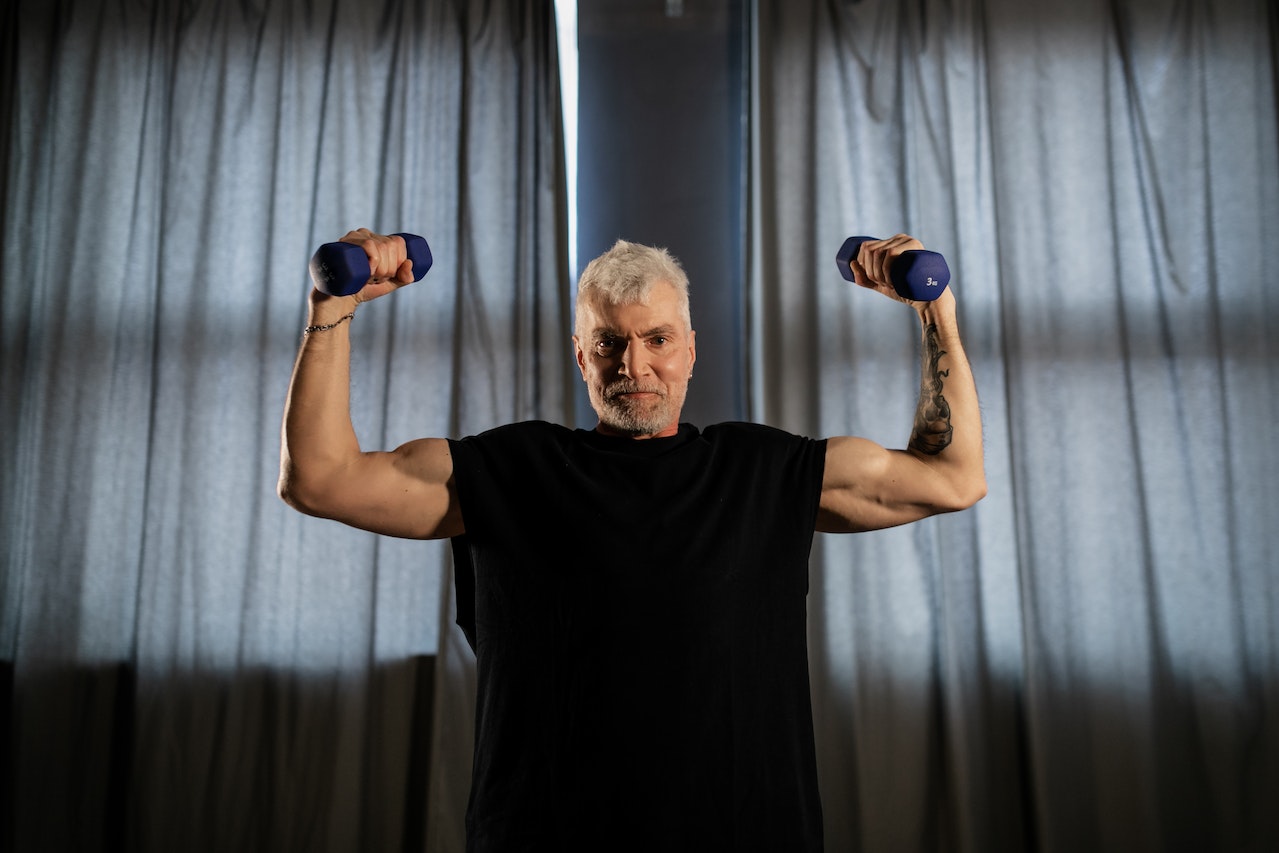
It sucks getting older. I feel like I was 25 years old a week ago. I had a conversation with my 17-year-old niece a few weeks ago. We share the same interests, music, arts, and movies. We both love science fiction and comedies. My favorite time travel movie is Back to the Future. Hers too. She called it a classic. I said, wait I’m 55 years old, if that’s a classic, what am I, thinking I might get a compliment. “Oh, you’re just old, but cool-old, Uncle Chris.”
Ummm…thanks?
Granted, it has been known for several years that we can’t beat age, but perhaps we can fight like warriors a battle against aging. In time, we will lose muscle mass, strength, and aesthetics. Though, we can give it a strong fight and maybe win the war while losing a few battles.
Is that the way that cliché goes?
As we age, there is a common misconception that physical strength and fast-twitch muscle response will naturally decline. However, this doesn’t have to be the case. With proper training, it’s possible to maintain strength and muscle response even as we age. In fact, studies have shown that elite and master athletes are capable of remarkable performance if they are properly trained. Let’s explore how this can be done.
Benefits of Strength Training
Strength training is the best way to maintain or even increase our physical capacity as we age. There are many benefits of strength training for adults over the age of 50 including improved balance and posture, increased bone density, decreased risk of falls, lower blood pressure, reduced stress levels, improved joint flexibility and mobility, and increased self-confidence.
Strength training can also help combat fatigue by providing more energy during the day.
For strength-training exercises for seniors (65 years and beyond), specifically there are 3 main types: Isometric exercises where you hold your body still in certain poses; Isotonic exercises, which involve using weights or resistance bands; And plyometric exercises, which include jumping jacks or other explosive movements that help develop fast-twitch muscles. It is important to tailor your routine according to your ability level so you don’t overexert yourself or become injured while exercising.
C your way into keeping your gains!
An exciting new study led by the University of East Anglia has established vitamin C as an important factor in preserving muscle mass for over 50s.
In collaboration with Cambridge and Strangeways Research Laboratory, this project from UEA medical student Lucy Lewis reveals that consuming plenty of sources rich in the nutrient like citrus fruits, berries and vegetables could aid older adults’ muscles staying strong into old age.
Vitamin C is therefore a beneficial ingredient to consider for maintaining muscular strength later in life.
Dr Richard Hayhoe, also from UEA’s Norwich Medical School, said that research on a large cohort of older Norfolk residents shows the potential for vitamin C intake to improve muscle health drastically with age.
An exciting discovery, people who consumed high amounts of Vitamin C were found to have higher skeletal mass in comparison those consuming less than idea levels recommended by European standards – and even more surprising is that nearly 60% men and 50% women aren’t meeting these recommendations! Fortunately, this issue could be tackled easily, as there are ample sources through fruits, veggies or supplements. Let’s fuel our muscles today.
Many people benefit from having a professional coach who can guide them through their workouts safely and effectively, so they get the most out of their sessions.
Strength training is a valuable tool to help seniors stay physically active and healthy.
However, it’s key that the routine you choose fits your abilities so as not to overexert or become injured while exercising. Isometric exercises include static postures like wall sits; isotonic workouts involve weights and resistance bands for focused toning, while plyometrics use explosive movements such as jumping jacks which target fast twitch muscles — all of them tailored based on ability level.
For maximum results, many people benefit from partnering with a professional coach who can provide guidance throughout their journey!
Strength and fast-twitch muscle response do decline with age, but only if we don’t actively train them.
Studies have shown that with proper training seniors can maintain or even increase their physical capacity over time! By engaging in strength-training exercises like Isometric holds, Isotonic reps with weights/resistance bands & Plyometric explosive movements those lost muscle fibers can be buffered by the development of ones remaining! Having a professional coach to guide us through our workouts safely & effectively can also maximize our results! So don’t let age stop you from reaching your fitness goals – keep active & stay strong.



